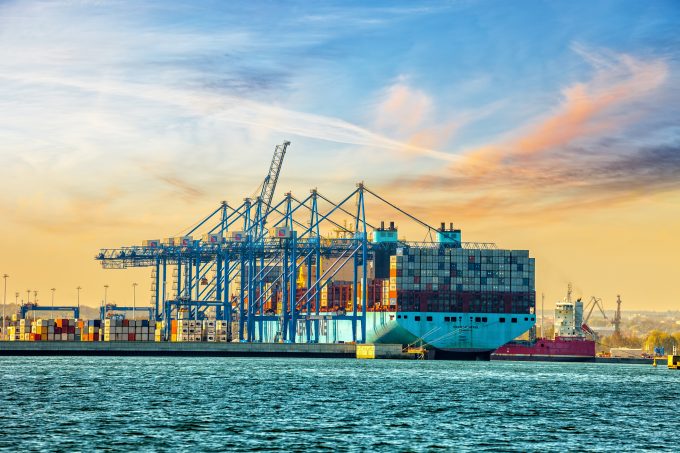DSV chief reticent on Schenker: the focus on growing market share
DSV focused on gains in market share, organic growth and making investors confident in its ...

AP Møller Maersk (APMM) saw underlying profit drop to $711m in 2016, compared with $3.1bn the year before.
The figures were dragged down by a $376m loss at Maersk Line, which contrasts with the ocean carrier’s $1.3bn positive contribution in 2015.
Maersk Line’s 2016 revenue was 13% lower than in 2015, at $20.7bn, caused by an 18.7% plunge in average freight rates to $898 per teu as the carrier became embroiled in a fierce rate war driven by chronic overcapacity across many tradelanes.
“2016 was a difficult year financially, with headwinds in all of our markets,” said group CEO Soren Skou.
However, he was upbeat on guidance for this year, believing that “an inflection point had been reached” in regard to the critical liner business.
Mr Skou said the carrier’s very impressive organic volume growth of 9.4% in 2016 would be supported by contract and spot rates at “substantially higher levels” this year, and thus Maersk Line had entered 2017 “in a much stronger position”.
CFO Jakob Stausholm said container rates were “improving quite a lot”, but that much of the benefit from the increases would only be seen in the first quarter, due to the way that voyages were accounted and revenue recognised.
The hangover from sub-economic rates, he suggested, explained the $155m loss incurred by Maersk Line in Q4.
In its guidance, APMM said it expected “an improvement in excess of $1bn” in underlying profit for Maersk Line this year, a statement one analyst told The Loadstar this morning it believed was “conservative”.
“Maersk Line is best positioned to take advantage of the higher rates by virtue of it being the largest operator, as well as the industry cost leader,” said Drewry Financial Research Services in a note to investors.
Maersk Line liftings rose 1.8m teu, or 9.4%, compared with 2015, to 20.8m teu, after the carrier gained “more than its fair share” of a Hanjin customer ‘flight to safety’ in the aftershock of the South Korean line’s sudden failure on 31 August.
Lars Jensen, CEO and partner at SeaIntelligence Consulting, estimates that Maersk Line took some 19% of Hanjin’s volume in Q4.
This massive above-market performance, Mr Skou suggested, was the equivalent of “almost half a Hamburg Sud”, but conceded that organic growth levels of this size were “unlikely” going forward.
On the acquisition of the German carrier, announced in December, Mr Skou said due diligence was “progressing well” and completion was expected before the end of the year.
Meanwhile, APM Terminals reported a profit of $438m for 2016, compared with $654m the year before. This was attributed to “lower profit in commercially challenged terminals in Latin America, North Europe, and Africa as a consequence of liner network changes and weak underlying markets”.
Throughput at APMT increased to 37.3m teu, from 36m teu in 2015, but this was due to the extra volumes gained from the acquisition of eight of the 11 terminals of the Spanish Grup Maritim (TCB).
Mr Skou said that for APMT there was “no easy recovery”, but stressed that the strategy was to “drive costs out and focus on existing business” rather than “plant new flags in the ground”.
Forwarding arm Damco reported a profit of $31m for the year, compared with $19m in 2015, which Mr Stausholm said confirmed that “the return to black was consistent”.
In September last year, APMM split it business into two divisions: Transport & Logistics and Energy, with a view to gaining $150m a year in synergies from the former and divesting the energy sectors via mergers, joint-ventures or listings.
Comment on this article